The Phoenician colony of Sexi,
established in antiquity, c.8th century BC, had
by 49 BC become the very Roman Firmium Julium Sexi, which
with the collapse of the Western Roman Empire in 476 AD fell to the
plundering and wrecking hordes of Germanic Visigoths who did little
positive by which to be remembered. Civilisation returned on
August 15th 755 when Omeya Abd al-Rahman I, the founder of the Emirate
of Cordoba, arrived at Almuñécar from Damascus to establish an Arab kingdom. The cross on 'Peñon del Santo' the
rock at the harbour entrance marks the defeat of the Arabs, their
surrender at Almuñécar, and the return of Christianity in 1489 followed by a
century of co-existence.



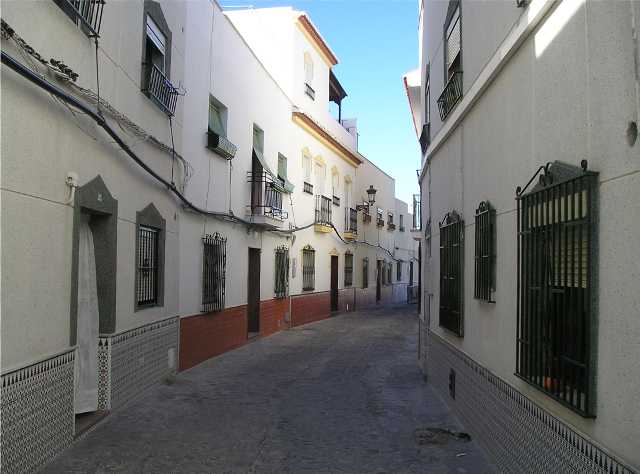


BUT The statue at
the base of that rock 'Peñon del Santo' is that of Omeya Abd al-Rahman I, the Arab
conqueror himself. The Arab Moslem period is indeed
recognised in Andalusia ( and especially in Almuñécar as an important part of local heritage. This was borne
out only last year when a ship carrying illegal immigrants
from North Africa floundered on the rocks with loss of life and the
survivors were rescued and brought to Almuñécar. The authorities wanted them handed over to
be sent back to Africa. Local opinion and petition in Almuñécar was against it
and in the end the survivors were allowed to stay. Almuñécar, like Grenada and Andalusia are Arab
names but still in general use.
Below, nearby, a
charming beach cafe
sports an elaborate mural of an
Alhambran scene, one of many modern architectural allusions to
Andelusia's rich Morisco past:
In the old town the
street layout and the buildings have Moorish origins.
The iron grills on
the ground floor windows are absolutely necessary if you wish to insure
your domestic property anywhere in Spain.
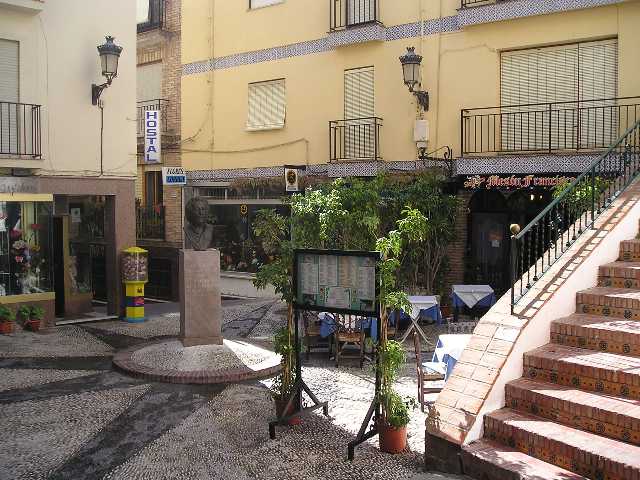

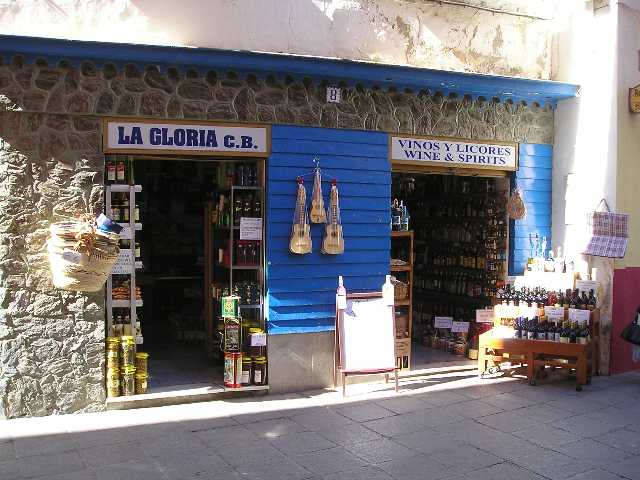
Almuñécar is also Christianised (or perhaps paganised - its the Goddess of fertility herself) as in this water fountain on the Calle Real (King Street) dated to 1559 and with the royal cypher above but at that time using the existing Roman water supply from Las Angosturas, first installed 1500 years earlier:
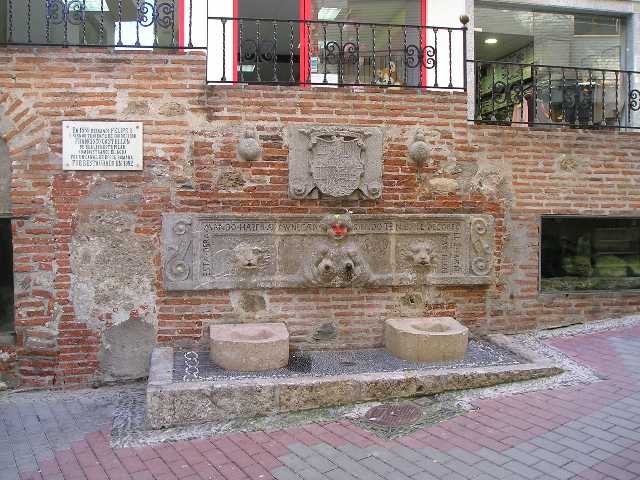
The fountain - but not the water supply - was restored in 1994!
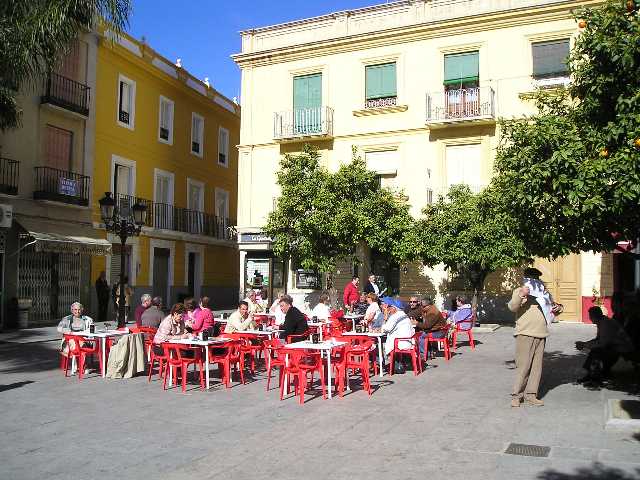
The main square has Seville Orange trees (first introduced by Christians) in front of the town hall.
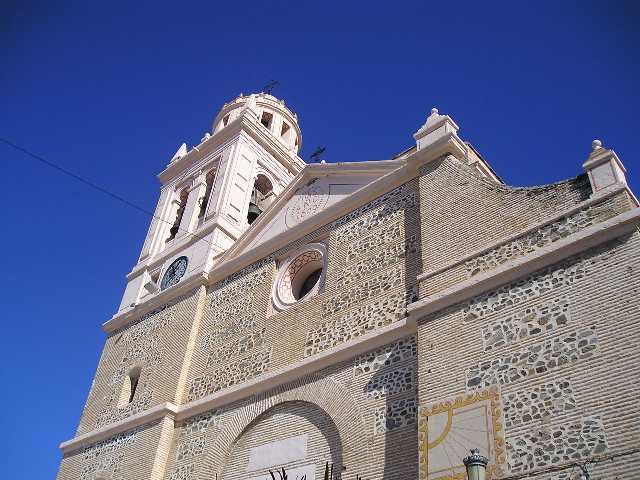
Just above the square is the Church of the Incarnation, its foundation stone laid in 1557.
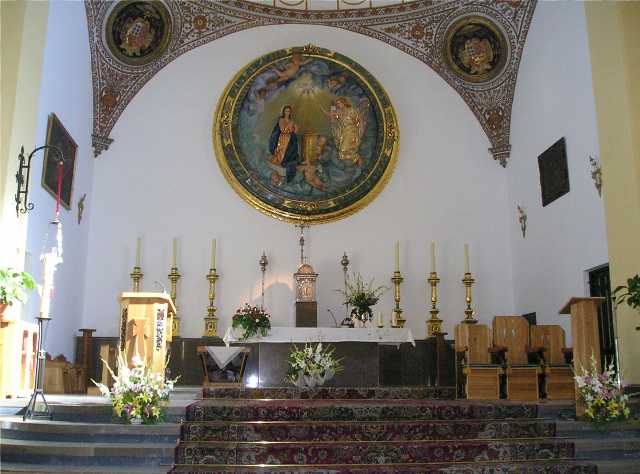
Almuñécar is also Christianised (or perhaps paganised - its the Goddess of fertility herself) as in this water fountain on the Calle Real (King Street) dated to 1559 and with the royal cypher above but at that time using the existing Roman water supply from Las Angosturas, first installed 1500 years earlier:
The fountain - but not the water supply - was restored in 1994!
The main square has Seville Orange trees (first introduced by Christians) in front of the town hall.
Just above the square is the Church of the Incarnation, its foundation stone laid in 1557.
Completed in 1600, the
first Baroque church in Grenada Province. It has been
beautifully modernsed in the light of the second Vatican Congress.
Below, one of the
better
early murals that have been retained and restored:
Almuñécar has a wonderful heritage, almost unknown until the 1950's - may it never be lost.
________________________________
BUT - Perhaps the economic future of Almuñécar lies with brown bodies on this beach!?
Playa San Cristóbal opposite the Hotel Helios.
Try this link to the San Cristóbal Beach Webcam
Visit Llandudno - Queen of Welsh Resorts
Photographs © 2006 by Noel Walley
Email: Webmaster